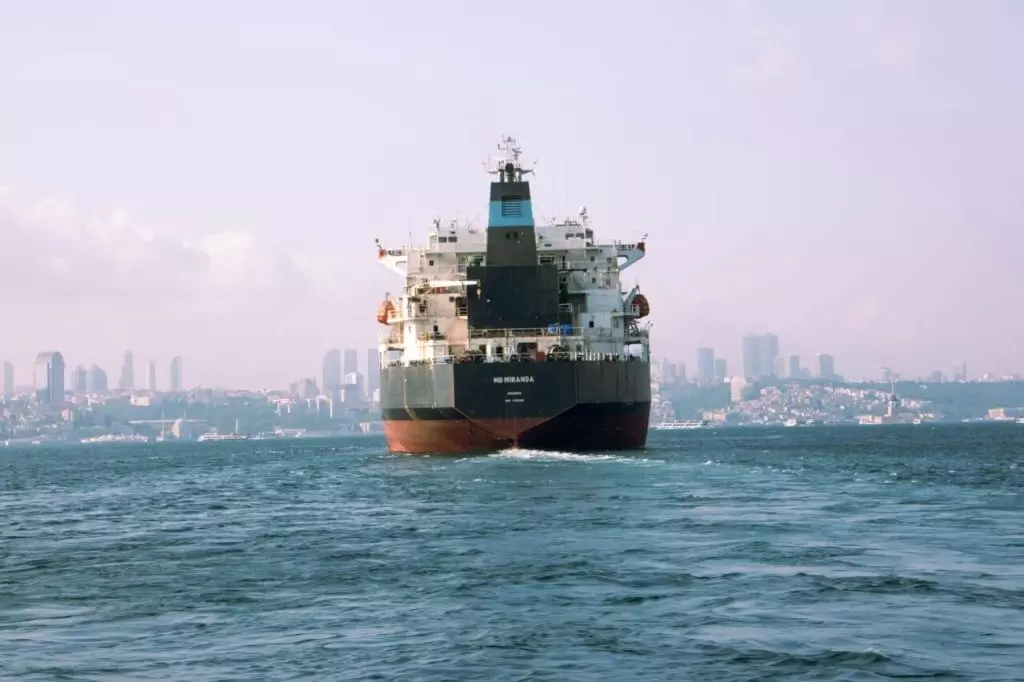How Much Does it Cost to Ship a Container Overseas?
The typical freight shipping costs when moving can cost between $2,000 and $6,000 for a full container load.
Shipping your belongings internationally can be expensive. Distance, weight, and size of the shipment will be the main cost factors.
Shipping Container Sizes and Prices for Overseas Relocation
For your cost-efficiency, choosing the right size of a container is key. There are two main container types, 20 and 40-feet. We’ve broken down the costs for 20-foot and 40-foot containers to different continents:
Cost of a 20-foot Shipping Container for International Moves
Shipping a 20 ft container can range from $2,800 to $15,600.
| Destination | 20ft Container |
| North America | $1216 – $3414 |
| South America | $1985 – $7195 |
| Europe | $1,440 – $7,805 |
| Africa | $4,980 – $7,985 |
| Oceania | $4,685 – $15,610 |
| Asia | $3,025 – $4,220 |
Related article
Read all about the shipping costs for your relocation overseas to Germany.
40-Foot Container Costs for International Moves
The prices to ship a 40 ft container can vary from $1,865 to $13,080.
| Destination | 40ft Container |
| North America | $1,519 – $4,267 |
| South America | $3,690 – $8,460 |
| Europe | $1440 – $21855 |
| Africa | $5,860 – $9,395 |
| Oceania | $7,805 – $23,415 |
| Asia | $3,555 – $4,965 |
Related article
Find out the moving costs for your international move to Australia.
Container Shipping Cost Calculator
Get an instant estimate of your shipping container costs based on your origin and destination.
Overseas Shipping Quote
Fill in the form below and get an accurate cost to ship a container overseas.
FCL vs LCL Shipping Rates
- Full Container Load (FCL): Costs around $4,000 for international moves.
- Less-than-container load (LCL): Rates average around $1,600 for moving overseas.
What is the least expensive way to send goods overseas?
The least expensive way to send goods overseas is by sharing a container with other users. You will share not only the space but the costs.
What is the meaning of a full container?
Also known as FCL, a full container means that you will have an entire container for yourself when moving. It is pricier, but ideal if you’re moving a large amount of belongings.
Sign up and receive our tips for moving house internationally & other guides
Sirelo uses the information you provide to us to contact you about our relevant content and services. You may unsubscribe at any time. For more information check our
privacy policyThank you for subscribing
Shipping Furniture Overseas Costs
Shipping furniture internationally can typically cost between $2,000 to $9,000 in a full container or $1,000 to $3,000 by sharing a container.
Cheapest Way to Ship Personal Belongings Overseas
- Share a container over a full one. You’ll only pay for the space you’re using
- Choose port-to-port service to save costs on transportation
- Declutter to reduce volume and weight
- Request multiple quotes to compare and get the best deal
Cost of Shipping a Piano Overseas
The average cost to ship a piano internationally fluctuates between $1,000 and $5,000, depending on the size and weight of it.
To ship a piano overseas, make sure to:
- Prepare the piano – disassemble and secure any moving parts to prevent damage during the move.
- Choose shipping method – sea freight is cost-effective, but by air will be faster.
- Hire professionals experienced in shipping heavy and fragile items.
- Get comprehensive insurance against damage or loss.
Related article
Read on shipping car costs, options, and some tips.
Standard Container Dimensions for Moving Household Goods
20ft and 40ft are the most popular sizes for moves. Not sure which one fits best for your needs? Keep reading.
What Can I Fit in a 20ft Container?
A 20ft container can generally hold the contents of a three-bedroom property.
These measures are 19’4″ length, 7’9″ width, and 7’10” height. These types of containers can hold around 63,500 pounds of goods.
![20ft shipping container]()
What Can I Fit in a 40ft Container?
In a 40ft container, you can generally hold the contents of a four-bedroom and up property.
These measures translate to a 40′ length, 8′ width, and 8’6″ height. These types of containers can hold around 57,600 pounds of goods.
![20ft shipping container]()
What is the meaning of a full container?
Also known as FCL, a full container means that you will have an entire container for yourself when moving. It is pricier, but it’s the best option if you’re moving a large amount of belongings.
How to Send a Container Overseas?
- Decide how many items you’re moving to decide the container size
- Get quotes from movers to compare prices and services
- Hire a reputable container shipping company
- Pack your belongings and prepare all necessary documents
- Coordinate the arrival to your final destination
Factors Affecting Shipping Container Cost
- Cargo volume and weight: Larger and heavier shipments cost more.
- Moving distance: Longer distances increase the total.
- Load and delivery: Port-to-port, door-to-door, or drop-and-fill options vary in price.
- Mode of transport: Air, sea, or road. For international moves, air is faster but more expensive than sea.
- Type of goods transported: Special goods like pianos or cars.
- Additional services: Insurance, storage, packing services, etc
Start Preparing Your Move
If you need some extra information when planning your move abroad, we recommend checking out the pages below and the FAQs section.











